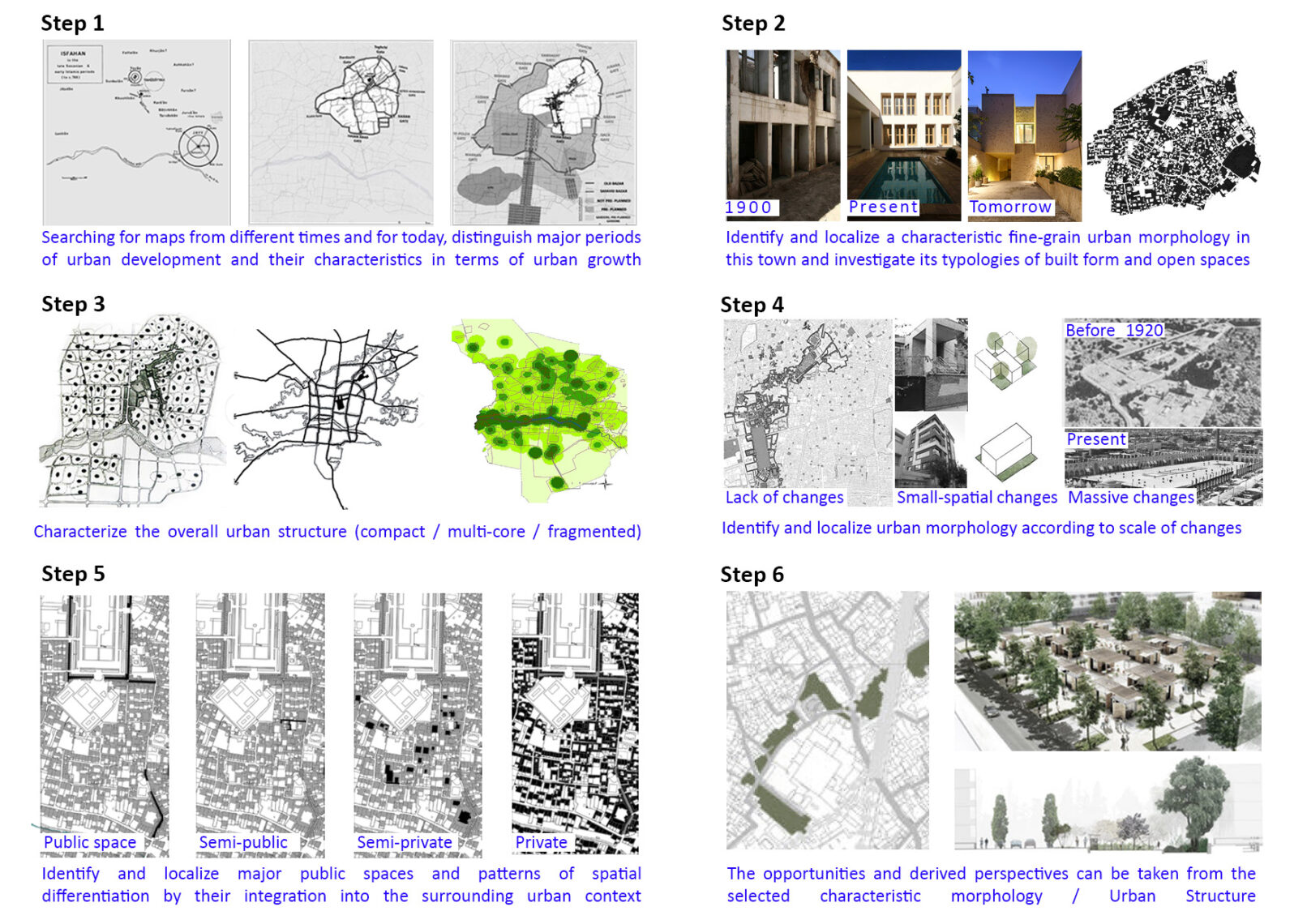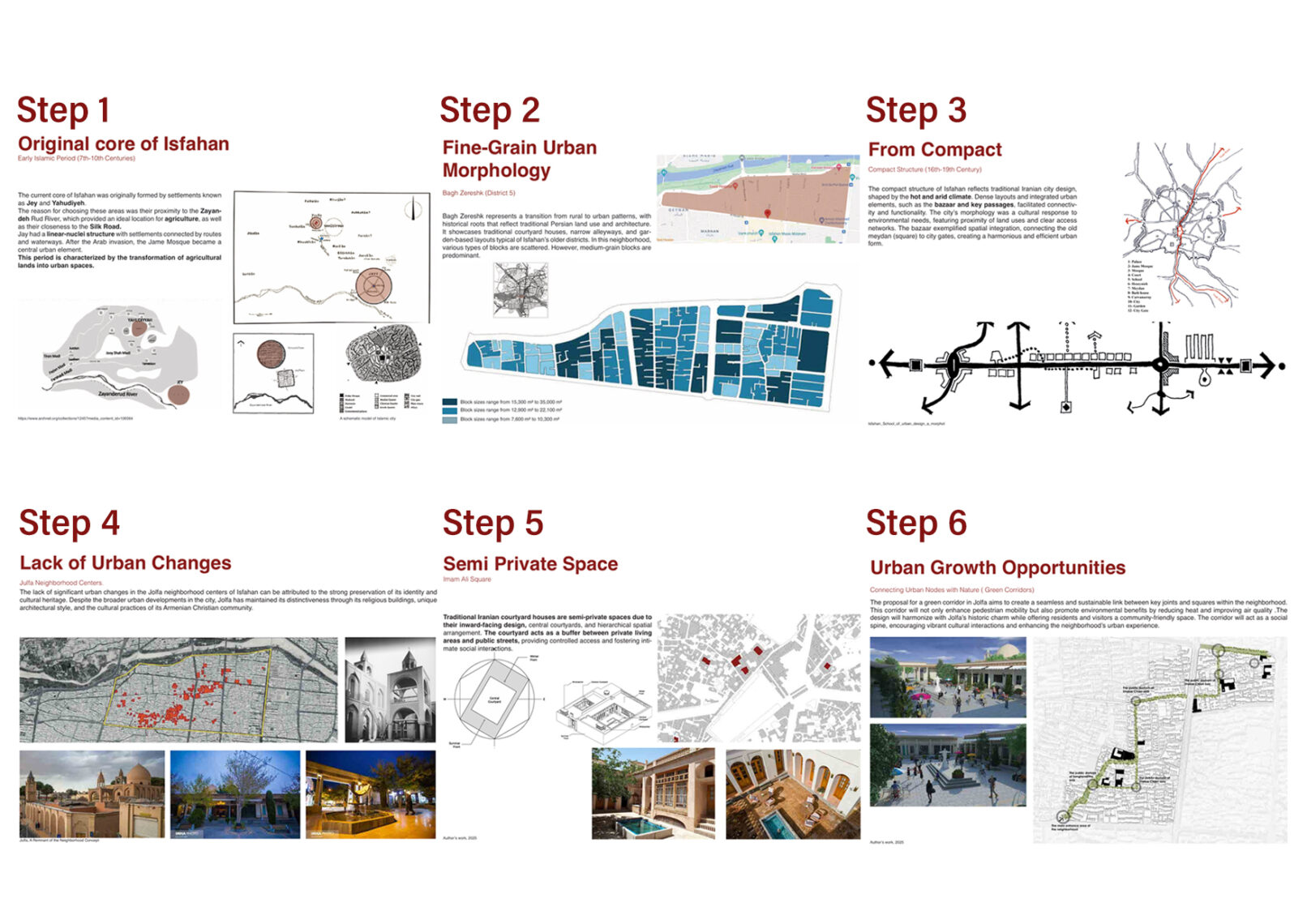Winter Semester 2023/24 Project by Hossein Abdeyazdan
Winter Semester 2024/25 Project by Kiana Jaberi
Lecturer: Prof. em. Dr.-Ing. Andrea Haase
winter semester 2023/24 and 2024/25
This course introduces by lectures and related steps of the exercise basic understandings of „Cultural urban Landscapes“ and their „Spaces“. It considers “Urban Changes” relative to major periods of urban growth in their international historical classification. It defines “Urban Structures” relative to topography, geography, economy, politics and socio-cultural influences on guiding Urban Development and Urban Transformation per time and place. It distinguishes classically different categories for types of “Urban Structure”, their growth patterns, their structural characteristics and long-term values.
The students’ home-town in the surrounding region is the object of exercise with six steps on different scales about urban growth patterns by map-analysis and notes from personal memories. Major aspects of the task: Time-line of origin and historical influences; Definition of type of urban structure and major characteristics of morphologies. Identification and localization of historical and contemporary urban changes (massive/ small spatial/ lack of …). Principle sketches illustrating ongoing processes of the land-market (case of characteristic morphology) and needs for counter-balancing the exploitation of natural and man-made resources (scales of morphology/ whole town). In each part, students will present a chronological study of their case study findings, ranging from historical maps to recommendations for using existing opportunities for urban transformation. This will refer to cores and edges, landscapes, public and private spaces, movement in space and their morphological, spatial, and functional dimensions.

